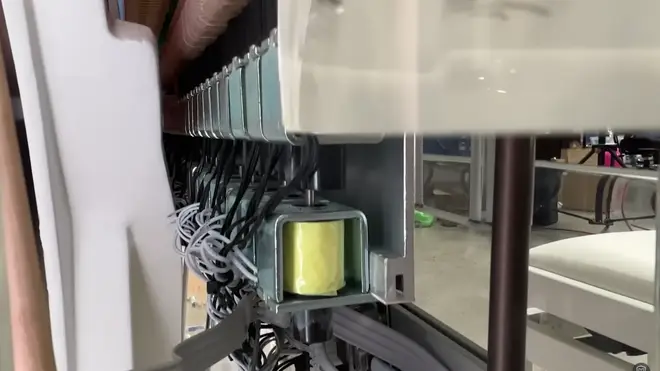Self-playing piano can speak English, sing and play the world’s most fiendish melodies
1 April 2022, 13:09 | Updated: 1 April 2022, 16:18

Robot Piano Catches Fire Playing Rush E (World’s Hardest Song)
Meet Chopstix, the bizarre brainchild of a YouTuber and a piano company.
Listen to this article
Created for the American YouTuber, engineer, and inventor, Mark Rober (of Squirrel obstacle course fame), this modified piano is called Chopstix, and it can play itself.
Not only can it make music without the need for a pianist to hit the right keys at the right time, it can also sing... (sort of).
The pre-modified instrument, named ‘Chopstix’, is a Transparent Klavier Upright which was supplied by the Cambridge-based piano company, Edelweiss.
The piano uses a Prodigy player system which is what makes the instrument self-playing. Rober and a team of engineers at PianoDisc modified the player system (which usually can play up to around 30 notes at a time) to mean Chopstix could play every note at once.
Watch above to witness the full scale of Chopstix’s powers, and listen to the piano play the world’s “hardest piece of piano music”, Rush E, from 9.07. The work is impossible to play by human pianists due to the amount of notes involved, but the prodigy player system was modified so that Chopstix would be able to play it.
Rober assures viewers in his transcription, that no pianos were harmed in the making of this video – “[the piano] didn’t actually catch fire. I took some creative liberty in the form of a smoke bomb.”
Read more: This piano doesn’t have any black keys. How will it sound?

While self-playing pianos have been around for more than 100 years, with brands including Steinway making them, the Prodigy player system means Chopstix plays itself differently.
In previous self-playing pianos from the early 1900s, an electromechanical mechanism operates a piano via music recorded onto perforated paper; as air passes through the holes in the paper, it triggers the player device. However, this means every note dynamically sounds the same when triggered.
The Prodigy player system instead uses ‘solenoids’, a type of electromagnet. Piano strings can be hit at a range of 127 different forces, allowing the sound and dynamic quality to change depending on what the music requires.
Chopstix can also speak. Rober achieves this bizarre feature using ‘Fourier transform’, which when applied, breaks down a soundwave and the piano can then reproduce the human voice by playing several piano keys at the same time.
It’s not perfect, but still an impressive extra addition from the YouTuber.
Read more: Playable piano made entirely from paper can be played via your smartphone

Mark Rober Video featuring the Edelweiss Transparent as ChopStix
Can you buy Chopstix?
Rober’s video featuring his modified piano, Chopstix, has been viewed over 12 million times on YouTube.
While you can’t buy Rober’s piano, Chopstix, Edelweiss has a dedicated page on their website where you can learn more about purchasing a Transparent Klavier Upright piano.


































